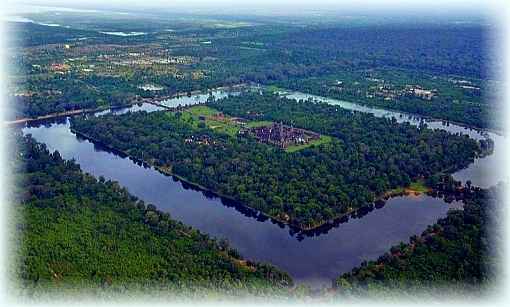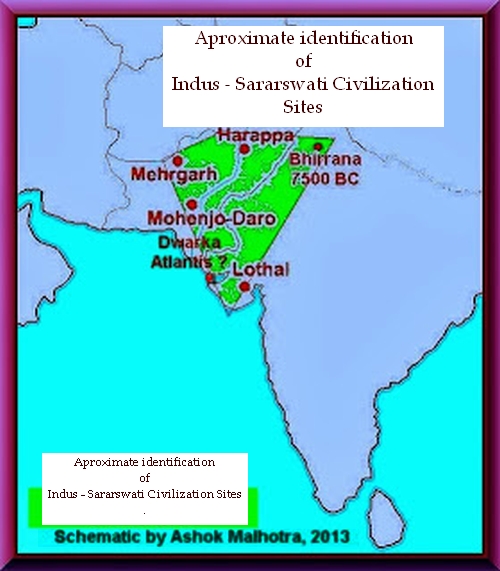How The Ice Age gave birth to Human Civilization
Everyone knows of annual variations that take place as the
Earth orbits around the Sun. However there are other much longer duration
variations that also take place. As the Earth spins around its axis and orbits
around the Sun, several other periodic variations occur. Milankovitch, a Russian
Scientist, studied some of these changes in Earth's movements and described what
are known as Milkanovitch Cycles. Such changes in movement and orientation
alter the amount and location of solar radiation reaching the Earth and are a cause of various ice ages and variations
within the ice ages that the planet has witnessed in the past. There are other
factors that also contribute to the occurrence of such major climatic changes.
There have been at least five ice ages in the past and
presently we live in a relatively warm portion of an ice age that is currently on. That is
why the polar ice sheets still exist. Some say that this will end after 50,000
years while a recent research study says it shall be as soon as 2030. Because these changes are a result of cycles, they do not take place suddenly but rather slowly as the seasons change, but in this case over centuries rather than days. If the latest theory backed by impressive scientific evidence (see here), about the end of inter glacial is true then a slow cooling period will begin on the planet in 2030.
The current Ice Age started around two and a half million years ago. it is only in the relatively recent portion of this ice age that animals like apes evolved into humans and began to spread across the world.
Since the ice age began, the world has seen cycles of glaciations with ice sheets advancing
and retreating on 40,000 to 100,000 year time scales called glacial periods
(cold). The earth is currently in an interglacial (warm period) after the last glacial
period ended about 11000 years ago. All that remains of the continental ice
sheets are now confined to Polar Regions because of this temporary warming.
A northward movement, as far north as Turkey may have begun soon after the end of the glacial period as ancient archeological discoveries reveal. For example see,
http://www.disclose.tv/news/gbekli_tepe_at_least_7000_years_older_than_stonehenge/120465
A northward movement, as far north as Turkey may have begun soon after the end of the glacial period as ancient archeological discoveries reveal. For example see,
http://www.disclose.tv/news/gbekli_tepe_at_least_7000_years_older_than_stonehenge/120465
During the cold periods, sea levels fall and coastal regions
are exposed while most regions around the north and south freeze up. Regions
around the equators remain green and habitable. Any life on the planet that
can gradually move over to these equatorial regions survives the freezing cold
by escaping from regions where life becomes nearly impossible as in the arctic regions now.
It seems that many humans and animals from Europe and Central Asia would have moved first to warmer South Asia and then gradually to the southern tips of South
Asia as the cold advanced, simply because that is a region closest to the equator in the old world of
Asia and Europe connected with the continents by land. At that time, far more
land area was exposed than now because the sea levels had fallen. During the glacial period crossing the Himalayas would have been impossible by migrants because of ice sheets covering the passes. However, coastal routes would have become easier and wider with the sea receding and it is these routes the early migrants and even animals are likely to have followed.
It seems the language spoken by such migrating humans to South Asia would
have been early forms of Indo-European
languages and the complexion of these humans fair. In southern India these Indo-European humans would have
encountered a darker human Australoid race that was already settled there as
has been established by modern DNA mapping and out of Africa
theories. These persons would have spoken early forms of Australoid languages
that towards the end of the glacial period seems to have evolved into early
forms of what are known as Dravidian languages with ancient Tamil being the
most prominent of them.
The intermixture of races and cultures that took place seems
to have led to the emergence of earliest organized human civilization towards
the end of the last glacial period in these southern coastal regions around
10,000 to 11000 years ago. The prominent racial quality appears to have been Australoid
and the language an early form of Tamil although mixtures with fairer Indo
European races and languages would have existed within it. This mixture
continues up to present times.
As the interglacial period began and sea level began to
rise, coastal regions began to get submerged once more. Ancient Tamil records have stories of this successive submergence of southern coastal cities. Simultaneously ice sheets
began to melt in the North and thus began a movement of people northwards
again. The most civilized of these early Tamil people, when they reached
northern regions of Indus Valley, Elam and Sumer became the rulers, at first
over people who spoke a different language and were fairer. In Indus valley they were the Indo European people who
arrived there earlier speaking early forms of Sanskrit. In Sumer it was
the Akkadians. It has now been shown that Sumerian and Elam languages were early
versions of the Australoid Tamil and the rulers a dark race. Similarly in early
mythological stories of Indus region, the rulers and godly kings such as Krishna and Rama are dark personalities while the
population is fair in the majority. Over time Majority rule prevailed again in Sumer and Indus Valley as is natural
and local languages and races reasserted as in the present with early forms of Tamil disappearing from these parts (except for a few isolated pockets such as one in Balochistan). Tamil has continued and developed in its original southern homeland until present times.
While this northward and westward movement of civilization
took place another movement took place towards the east in a movement that
lasted until relatively recent times, as late as around a thousand years ago,
and the Angkor Wats of South East Asia are a culmination of the creation of
ancient civilization there and a glimpse of these early humans who spread the
seeds of civilization as we know of now on the planet.
This appears to be in brief the story of birth of human
civilization in the past. The Egyptian civilization sprang from an off shoot of
the Sumerians. More detailed descriptions with specific details of this story
are in earlier articles in this blog.
Some may wonder what will happen when the ice age we are in ends? Would most of the planet become too warm for comfort? What would happen to human civilization then? Well if we are still around by then we shall simply move to the Arctic and Antarctica that shall become nice and green at that time.
 | ||
| A record breaking heat wave exposes the roof of a home in New York in glacial July 2130. 97% of scientists say it is a result of global warming caused by human activity :). |








Comments